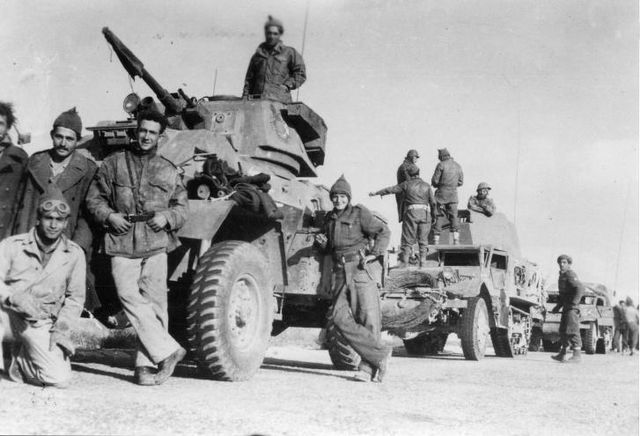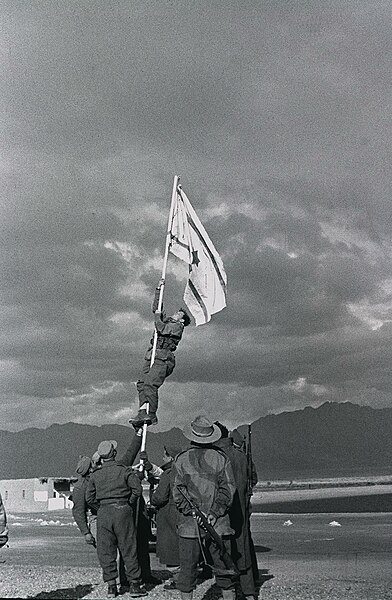Operation Yoav was an Israeli military operation carried out from 15–22 October 1948 in the Negev Desert, during the 1948 Arab–Israeli War. Its goal was to drive a wedge between the Egyptian forces along the coast and the Beersheba–Hebron–Jerusalem road, and ultimately to conquer the whole Negev. Operation Yoav was headed by the Southern Front commander Yigal Allon. The operation was named after Yitzhak Dubno, codenamed "Yoav" by his commanders in the Palmach. Dubno, a senior Palmach officer, was charged with planning and leading the defense of the kibbutzim Negba and Yad Mordechai. Dubno was killed in an air raid on Kibbutz Negba shortly after Egyptian forces began their offensive on Israel's southern front.
Israeli soldiers capturing Beersheba
The Iraq Suwaydan bombardment, 9 November 1948.
Negev brigade
Villages and towns captured during Operation Yoav, October 1948.
The 1948 Arab–Israeli War, also known as the First Arab–Israeli War, followed the civil war in Mandatory Palestine as the second and final stage of the 1948 Palestine war. The civil war became a war of separate states with the Israeli Declaration of Independence on 14 May 1948, the end of the British Mandate for Palestine at midnight, and the entry of a military coalition of Arab states into the territory of Mandatory Palestine the following morning. The war formally ended with the 1949 Armistice Agreements which established the Green Line.
Captain Avraham "Bren" Adan raising the Ink Flag at Umm Rashrash, a site now in Eilat, marking the end of the war.
A proposed separation of Palestine
A Palmach M4 Sherman tank leading a convoy
Clause 10 of the 15 May 1948 Arab League cablegram explaining the reasons for their entry into the territory








